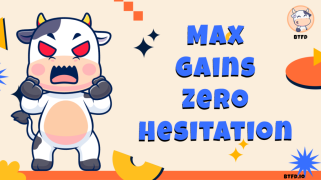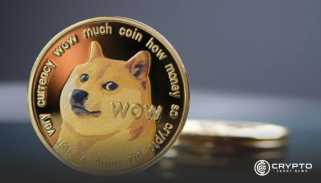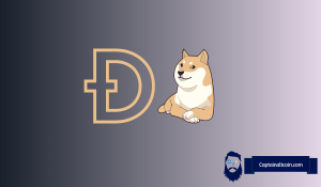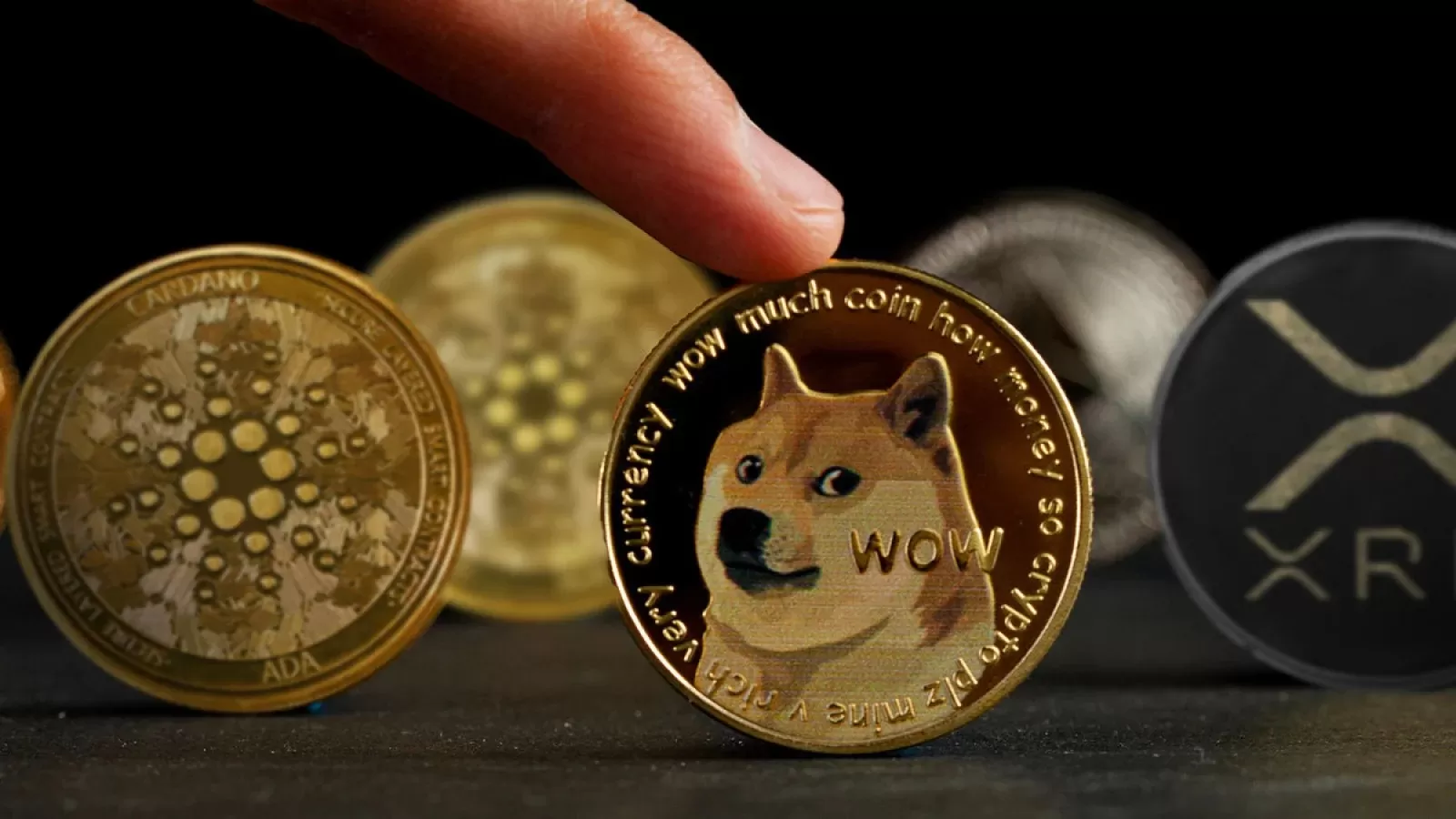
Cryptocurrencies are digital forms of money that use cryptography to secure transactions and control the creation of new units. They have become a popular topic in recent years, as more people are curious about their potential, challenges, and implications for the future of finance.
Kryptowährungen sind digitale Geldformen, die Kryptografie nutzen, um Transaktionen abzusichern und die Schaffung neuer Einheiten zu steuern. Sie sind in den letzten Jahren zu einem beliebten Thema geworden, da immer mehr Menschen neugierig auf ihr Potenzial, ihre Herausforderungen und ihre Auswirkungen auf die Zukunft des Finanzwesens sind.
One of the key features of cryptocurrencies is their supply, or the total number of tokens or coins that can exist in the market. Some cryptocurrencies have a fixed supply, meaning that there is a lifetime cap on how many tokens or coins can be mined or created. This makes them deflationary, as their value tends to increase over time due to scarcity. Bitcoin, for example, has a fixed supply of 21 million BTC.
Eines der Hauptmerkmale von Kryptowährungen ist ihr Angebot oder die Gesamtzahl der Token oder Münzen, die auf dem Markt vorhanden sein können. Einige Kryptowährungen haben einen festen Vorrat, was bedeutet, dass es eine lebenslange Obergrenze dafür gibt, wie viele Token oder Münzen geschürft oder erstellt werden können. Dies macht sie deflationär, da ihr Wert aufgrund der Knappheit im Laufe der Zeit tendenziell steigt. Bitcoin hat beispielsweise einen festen Vorrat von 21 Millionen BTC.
Other cryptocurrencies have an unlimited supply, meaning that there is no limit on how many tokens or coins can be mined or created. This makes them inflationary, as their value tends to decrease over time due to oversupply. Ethereum, for example, has an unlimited supply of ETH, although it has a fixed annual issuance rate of 18 million ETH.
Andere Kryptowährungen sind unbegrenzt verfügbar, was bedeutet, dass es keine Begrenzung gibt, wie viele Token oder Münzen geschürft oder erstellt werden können. Dies macht sie inflationär, da ihr Wert aufgrund des Überangebots im Laufe der Zeit tendenziell abnimmt. Ethereum beispielsweise verfügt über einen unbegrenzten Vorrat an ETH, obwohl es eine feste jährliche Ausgaberate von 18 Millionen ETH hat.
What are the advantages and disadvantages of tokens with unlimited supply? What are some of the largest and most popular tokens with unlimited supply? How can investors and users make informed decisions about these tokens? In this article, we will explore these questions and more.
Was sind die Vor- und Nachteile von Token mit unbegrenztem Vorrat? Was sind einige der größten und beliebtesten Token mit unbegrenztem Vorrat? Wie können Anleger und Nutzer fundierte Entscheidungen über diese Token treffen? In diesem Artikel gehen wir diesen und weiteren Fragen nach.
Join us in showcasing the cryptocurrency revolution, one newsletter at a time. Subscribe now to get daily news and market updates right to your inbox, along with our millions of other subscribers (that’s right, millions love us!) — what are you waiting for?
The Pros and Cons of Tokens with Unlimited Supply
Abonnieren Begleiten Sie uns bei der Präsentation der Kryptowährungsrevolution, einen Newsletter nach dem anderen. Abonnieren Sie jetzt, um tägliche Nachrichten und Marktaktualisierungen direkt in Ihrem Posteingang zu erhalten, zusammen mit unseren Millionen anderer Abonnenten (richtig, Millionen lieben uns!) – worauf warten Sie noch? Die Vor- und Nachteile von Tokens mit unbegrenztem Angebot
Tokens with unlimited supply have both benefits and drawbacks, depending on their design, use case, and market conditions. Here are some of the main pros and cons of these tokens:
Token mit unbegrenztem Vorrat haben je nach Design, Anwendungsfall und Marktbedingungen sowohl Vor- als auch Nachteile. Hier sind einige der wichtigsten Vor- und Nachteile dieser Token:
- Pro: Flexibility and adaptability. Tokens with unlimited supply can adjust their supply according to the demand and needs of the network. For example, Ethereum can increase its supply to incentivize miners and validators to secure the network, or to fund its development and innovation. This can also help prevent network congestion and high fees, as more tokens can be used for transactions.
- Pro: Stability and accessibility. Tokens with unlimited supply can also provide stability and accessibility for users and investors. For example, USD Coin (USDC) is a stablecoin that is backed by US dollars and has an unlimited supply. This means that users can always exchange USDC tokens for dollars at any time, and enjoy the benefits of a stable and widely accepted currency. Similarly, Dogecoin (DOGE) is a cryptocurrency that is based on a meme and has an unlimited supply. This means that users can easily acquire and use DOGE for fun and social purposes, without worrying about its price fluctuations.
- Con: Dilution and devaluation. Tokens with unlimited supply can also suffer from dilution and devaluation, as more tokens enter the market and reduce their scarcity and demand. For example, Dai (DAI) is a decentralized stablecoin that is backed by collateral and has an unlimited supply. This means that users can create new DAI tokens by locking up their assets in smart contracts. However, this also means that the value of DAI can be affected by the fluctuations of the collateral assets, as well as the risk of undercollateralization and liquidation.
- Con: Inflation and uncertainty. Tokens with unlimited supply can also face inflation and uncertainty, as their supply growth rate and monetary policy are not predictable or transparent. For example, Ethereum does not have a clear long-term plan for its supply management, as it is undergoing a major transition from proof-of-work to proof-of-stake consensus mechanism. This means that investors and users do not know how the supply of ETH will change in the future, or how it will affect its value and security.
Pro: Flexibilität und Anpassungsfähigkeit. Token mit unbegrenztem Angebot können ihr Angebot an die Nachfrage und die Bedürfnisse des Netzwerks anpassen. Beispielsweise kann Ethereum sein Angebot erhöhen, um Minern und Validatoren einen Anreiz zu geben, das Netzwerk zu sichern, oder um seine Entwicklung und Innovation zu finanzieren. Dies kann auch dazu beitragen, Netzwerküberlastungen und hohe Gebühren zu vermeiden, da mehr Token für Transaktionen verwendet werden können.
Pro: Stabilität und Zugänglichkeit. Token mit unbegrenztem Angebot können Benutzern und Investoren auch Stabilität und Zugänglichkeit bieten. Beispielsweise ist USD Coin (USDC) ein Stablecoin, der durch US-Dollar gedeckt ist und über einen unbegrenzten Vorrat verfügt. Dies bedeutet, dass Benutzer jederzeit USDC-Token in Dollar umtauschen und die Vorteile einer stabilen und allgemein akzeptierten Währung genießen können. Ebenso ist Dogecoin (DOGE) eine Kryptowährung, die auf einem Meme basiert und unbegrenzt verfügbar ist. Dies bedeutet, dass Benutzer DOGE problemlos zu Spaß- und sozialen Zwecken erwerben und nutzen können, ohne sich über Preisschwankungen Sorgen machen zu müssen.
Kontra: Verwässerung und Abwertung. Auch Token mit unbegrenztem Angebot können unter Verwässerung und Abwertung leiden, da mehr Token auf den Markt kommen und ihre Knappheit und Nachfrage sinken. Beispielsweise ist Dai (DAI) ein dezentraler Stablecoin, der durch Sicherheiten besichert ist und über einen unbegrenzten Vorrat verfügt. Das bedeutet, dass Benutzer neue DAI-Token erstellen können, indem sie ihre Vermögenswerte in Smart Contracts sperren. Dies bedeutet jedoch auch, dass der Wert von DAI durch die Schwankungen der Sicherheiten sowie das Risiko einer Unterbesicherung und Liquidation beeinflusst werden kann.
Kontra: Inflation und Unsicherheit. Auch Token mit unbegrenztem Angebot können mit Inflation und Unsicherheit konfrontiert sein, da ihre Angebotswachstumsrate und ihre Geldpolitik nicht vorhersehbar oder transparent sind. Ethereum hat beispielsweise keinen klaren langfristigen Plan für sein Angebotsmanagement, da es einen großen Übergang vom Proof-of-Work- zum Proof-of-Stake-Konsensmechanismus durchläuft. Das bedeutet, dass Investoren und Nutzer nicht wissen, wie sich das Angebot an ETH in Zukunft verändern wird und wie sich dies auf seinen Wert und seine Sicherheit auswirken wird.
The Top Tokens with Unlimited Supply
Die Top-Token mit unbegrenztem Angebot
Here are some of the largest and most popular tokens with unlimited supply:
Hier sind einige der größten und beliebtesten Token mit unbegrenztem Vorrat:
- Ethereum (ETH). Ethereum is the second-largest cryptocurrency by market capitalization, after Bitcoin. It is also a platform for smart contracts and decentralized applications (DApps), which enable users to create and use various kinds of digital services on the blockchain. Ethereum has an unlimited supply of ETH, but it has a fixed annual issuance rate of 18 million ETH. However, this rate may change in the future, as Ethereum is transitioning from proof-of-work to proof-of-stake consensus mechanism, which will introduce new mechanisms such as burning and staking for ETH supply management.
- USD Coin (USDC). USD Coin is a stablecoin that is backed by US dollars and issued by Circle and Coinbase, two of the largest cryptocurrency companies in the world. USD Coin has an unlimited supply, as new USDC tokens can be minted and redeemed at any time, according to the demand and supply of the market. USD Coin aims to provide a stable, secure, and transparent alternative to fiat currencies, as well as a bridge between the traditional and the crypto economy.
- Dogecoin (DOGE). Dogecoin is a cryptocurrency that is based on a meme and was created as a joke, but has gained popularity and support from celebrities like Elon Musk and Snoop Dogg. Dogecoin has an unlimited supply of DOGE, as it has no cap on its mining or creation. Dogecoin aims to be a fun and friendly currency that can be used for tipping, social media, and online communities.
- Dai (DAI). Dai is a decentralized stablecoin that is backed by collateral and governed by a community of token holders. Dai has an unlimited supply, as new DAI tokens can be created by locking up various assets in smart contracts, such as ETH, USDC, or WBTC. Dai aims to provide a stable and resilient currency that can be used for global payments, savings, and lending.
Ethereum (ETH). Ethereum ist nach Bitcoin die zweitgrößte Kryptowährung nach Marktkapitalisierung. Es ist auch eine Plattform für Smart Contracts und dezentrale Anwendungen (DApps), die es Benutzern ermöglichen, verschiedene Arten digitaler Dienste auf der Blockchain zu erstellen und zu nutzen. Ethereum verfügt über einen unbegrenzten Bestand an ETH, hat aber eine feste jährliche Ausgaberate von 18 Millionen ETH. Diese Rate könnte sich jedoch in Zukunft ändern, da Ethereum vom Proof-of-Work- zum Proof-of-Stake-Konsensmechanismus übergeht, der neue Mechanismen wie Burning und Stake für das ETH-Versorgungsmanagement einführen wird.
USD-Münze (USDC). USD Coin ist ein Stablecoin, der durch US-Dollar gedeckt ist und von Circle und Coinbase, zwei der größten Kryptowährungsunternehmen der Welt, ausgegeben wird. USD Coin verfügt über ein unbegrenztes Angebot, da je nach Nachfrage und Angebot des Marktes jederzeit neue USDC-Token geprägt und eingelöst werden können. USD Coin zielt darauf ab, eine stabile, sichere und transparente Alternative zu Fiat-Währungen sowie eine Brücke zwischen der traditionellen und der Kryptowirtschaft zu bieten.
Dogecoin (DOGE). Dogecoin ist eine Kryptowährung, die auf einem Meme basiert und als Scherz erfunden wurde, aber bei Prominenten wie Elon Musk und Snoop Dogg an Popularität und Unterstützung gewonnen hat. Dogecoin verfügt über einen unbegrenzten Vorrat an DOGE, da es keine Obergrenze für den Abbau oder die Erstellung von DOGE gibt. Dogecoin soll eine unterhaltsame und freundliche Währung sein, die für Trinkgelder, soziale Medien und Online-Communitys verwendet werden kann.
Dai (DAI). Dai ist ein dezentraler Stablecoin, der durch Sicherheiten besichert ist und von einer Gemeinschaft von Token-Inhabern verwaltet wird. Dai verfügt über einen unbegrenzten Vorrat, da neue DAI-Token durch die Bindung verschiedener Vermögenswerte in Smart Contracts wie ETH, USDC oder WBTC erstellt werden können. Ziel von Dai ist es, eine stabile und widerstandsfähige Währung bereitzustellen, die für globale Zahlungen, Ersparnisse und Kredite verwendet werden kann.
The Bottom Line
Das Fazit
Tokens with unlimited supply are a diverse and dynamic category of cryptocurrencies that have different advantages and disadvantages, depending on their design, use case, and market conditions. They can offer flexibility, stability, and accessibility, but they can also face dilution, devaluation, inflation, and uncertainty. Investors and users should be aware of these factors and make informed decisions about these tokens.
Token mit unbegrenztem Vorrat sind eine vielfältige und dynamische Kategorie von Kryptowährungen, die je nach Design, Anwendungsfall und Marktbedingungen unterschiedliche Vor- und Nachteile haben. Sie können Flexibilität, Stabilität und Zugänglichkeit bieten, können aber auch mit Verwässerung, Abwertung, Inflation und Unsicherheit konfrontiert sein. Anleger und Nutzer sollten sich dieser Faktoren bewusst sein und fundierte Entscheidungen über diese Token treffen.
Der Beitrag „Unlimited Supply Tokens: The Hidden Danger of Crypto Inflation“ erschien erstmals auf CryptoMesh.


 DeFi Planet
DeFi Planet BlockchainReporter
BlockchainReporter DogeHome
DogeHome Optimisus
Optimisus CFN
CFN CaptainAltcoin
CaptainAltcoin Bitcoin Sistemi
Bitcoin Sistemi






















